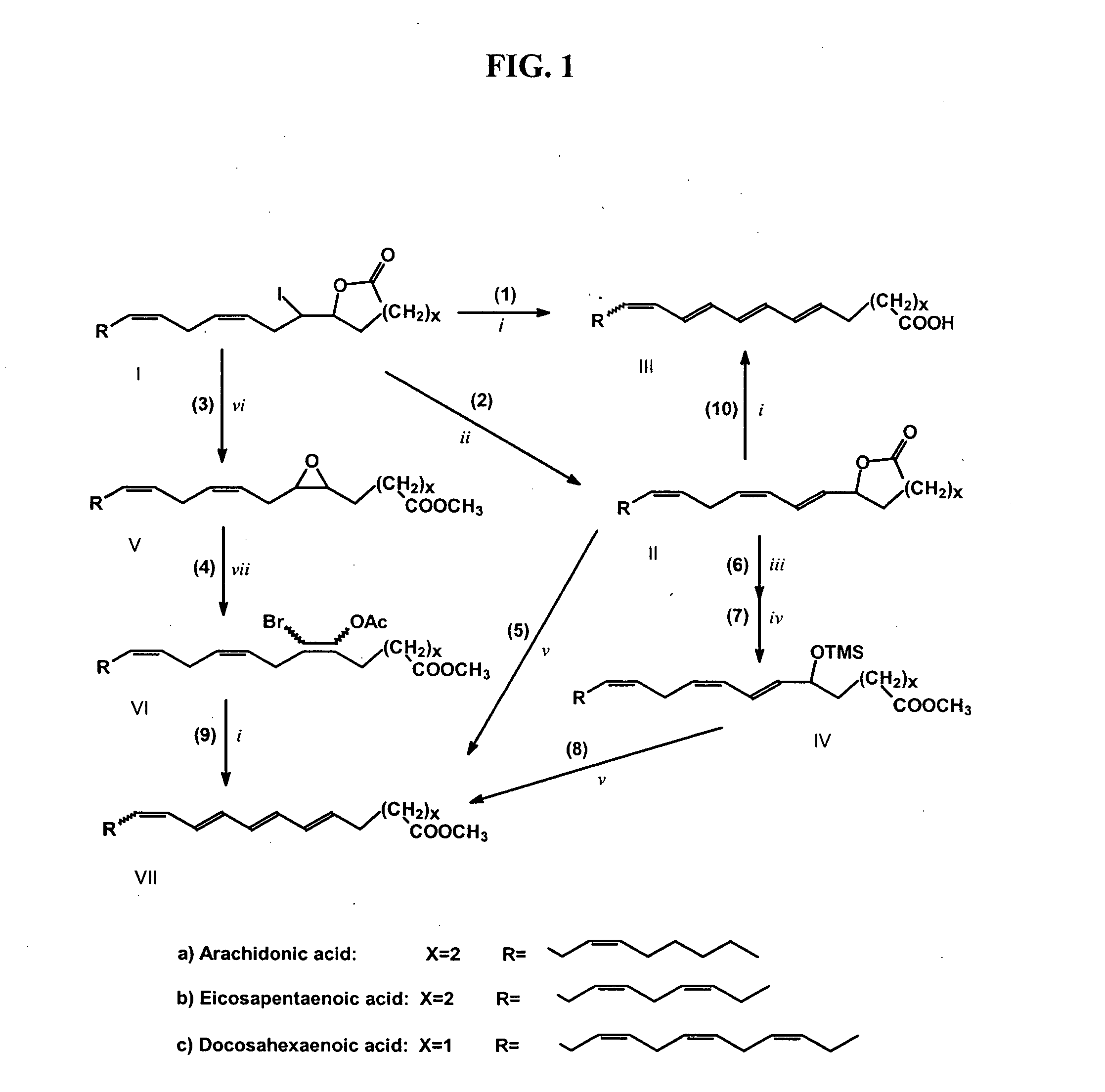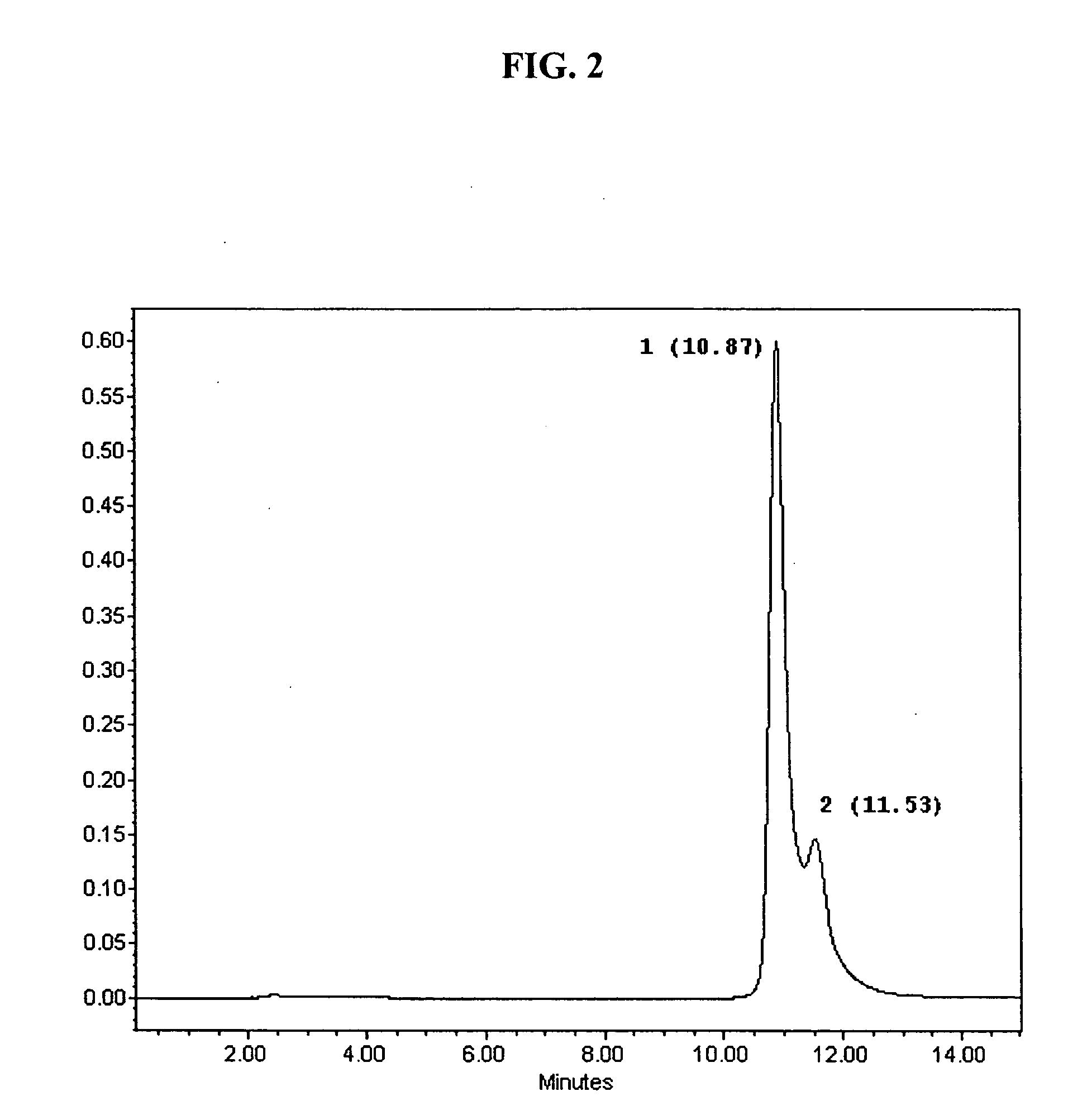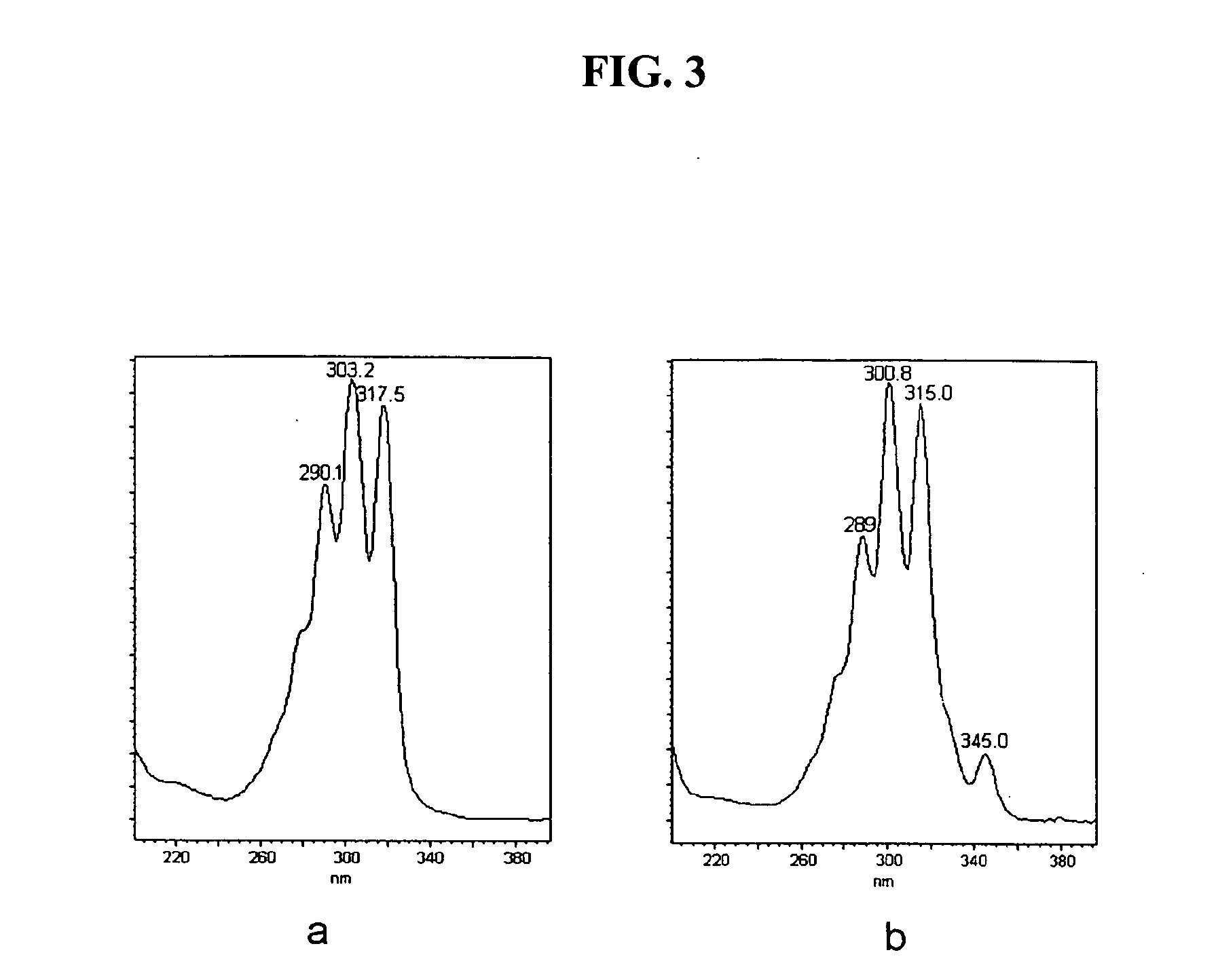Synthesis of polyconjugated fatty acids
a polyconjugated fatty acid and polyconjugated technology, applied in the field of fatty acids, can solve the problems of limited quantity and limited conformation of fatty acids, and achieve the effect of high yield and high yield
- Summary
- Abstract
- Description
- Claims
- Application Information
AI Technical Summary
Benefits of technology
Problems solved by technology
Method used
Image
Examples
example 1
[0097] This example describes reagents and equipment used in synthesis and analysis of polyconjugated fatty acids.
[0098] Reagents. Arachidonic acid (AA; 90%) and 1,8-diazobicyclo[5.4.0]undec-7-ene (DBU) were purchased from Sigma Chemical Co. (St. Louis, Mo.). Fish oil (28% eicosapentaenoic acid (EPA) and 23% docosahexaenoic acid (DHA)) was purchased from Walmart. Trifluoroacetic anhydride, ethanolamine, isobutylchloroformate, pyridine, pyrrolidine and 4-methyl-1,2,4-triazoline-3,5-dione were products of Aldrich Chemical Co. (Milwaukee, Wis.) with purities ≧96%. Benzene, hexane, ether and acetonitrile were distilled over phosphorus pentoxide and triethylamine, tetrahydrofuran (THF) and methanol were distilled over metallic sodium before use. DBU was distilled over CaH2 in vacuo. Silica gel “Selecto” 32-63 μm was purchased from Selecto Scientific (Georgia, USA). Thin layer chromatography (TLC) plates were purchased from Sigma Chemical Co. Compounds on TLC plates were visualized by sp...
example 2
[0101] This example describes methods used in synthesis and analysis of polyconjugated fatty acids.
[0102] Preparation of Iodolactones of DHA, EPA and AA.
[0103] A mixture of fish oil fatty acids (43.5 g, 28% EPA and 23% DHA) was dissolved in 150 ml of ethanol and 230 ml of a 7.5% solution of KHCO3 (17.3g of KHCO3; 1.2 eq per total fatty acid) was added to give a clear solution of fatty acid salts. A solution of 27 g of I2 in 300 ml of ethanol (1.5 eq per EPA plus DHA) and 500 ml of hexane were added to the clear solution with vigorous stirring. The reaction mixture was kept at room temperature (24° C.) for 16 hr, the hexane layer was removed and the reaction mixture was extracted with hexane (3×500 ml). The combined hexane layers were washed sequentially with aqueous 5% Na2S2O3 (250 ml), water (500 ml) and saturated aqueous NaCl (200 ml) and then dried over anhydrous Na2SO4 and evaporated under vacuum. The crude oily product (24.9 g, indicating ≧75% yield) was dissolved in dry benz...
example 3
Reactions of Iodolactones with Excess of DBU
[0124] This example describes in more detail the formation of conjugated tetraenoic fatty acids by reaction of iodolactones with excess DBU, as the yields observed for these reactions were particularly high.
[0125] HPLC Analysis
[0126] In all of these reaction mixtures, two major peaks are present; these two peaks are designated Compound 1 and Compound 2 in reference to the sequence of their elution from RP-HPLC (see FIG. 2). Thus, from HPLC analysis of the reaction mixture of 6-iodolactone of EPA treated by 2.2 equivalents of DBU for 72 hrs (as described above for Reaction 1, FIG. 1), two major peaks of the products are present, with k′1=5.75 (10.87 min) and k′2=6.16 (11.53 min), for Compound 1 and Compound 2, respectively. The difference in the retention times between the compounds is sufficient to separate them in preparative scale and of high purity (>95%).
[0127] The HPLC data on polyconjugated fatty acids derived from DHA and AA are...
PUM
| Property | Measurement | Unit |
|---|---|---|
| Temperature | aaaaa | aaaaa |
| Acidity | aaaaa | aaaaa |
| Boiling point | aaaaa | aaaaa |
Abstract
Description
Claims
Application Information
 Login to View More
Login to View More - R&D
- Intellectual Property
- Life Sciences
- Materials
- Tech Scout
- Unparalleled Data Quality
- Higher Quality Content
- 60% Fewer Hallucinations
Browse by: Latest US Patents, China's latest patents, Technical Efficacy Thesaurus, Application Domain, Technology Topic, Popular Technical Reports.
© 2025 PatSnap. All rights reserved.Legal|Privacy policy|Modern Slavery Act Transparency Statement|Sitemap|About US| Contact US: help@patsnap.com



